Scientific name Austroraptor | Species †A. cabazai Phylum Chordata Rank Genus | |
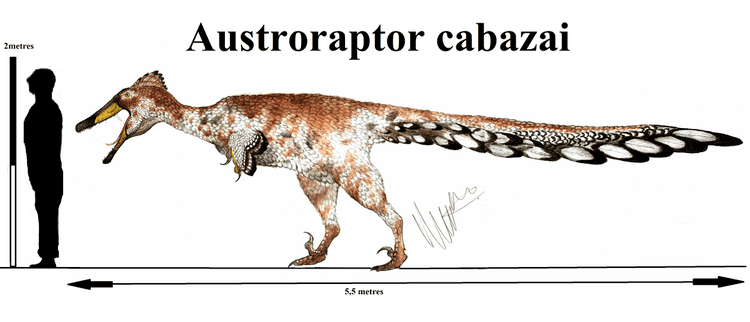 | ||
Similar Dinosaur, Dromaeosauridae, Buitreraptor, Achillobator, Theropods | ||
The isle austroraptor rawr i m a dinosaur
Austroraptor ("AWE-stroh-RAP-ter") is an extinct genus of dromaeosaurid dinosaur that lived about 70 million years ago during the Cretaceous Period in what is now modern Argentina. Austroraptor was a medium sized, moderately-built, ground-dwelling, bipedal carnivore, that could grow up to 5 m (16.4 ft) long. Its length makes Austroraptor one of the largest dromaeosaurids known, with only Achillobator, Dakotaraptor, and Utahraptor approaching or surpassing it in length. It is the largest dromaeosaur to be discovered in the Southern Hemisphere. Particularly notable about the taxon were its relatively short forearms, much shorter in proportion when compared to the majority of the members of its group.
Contents
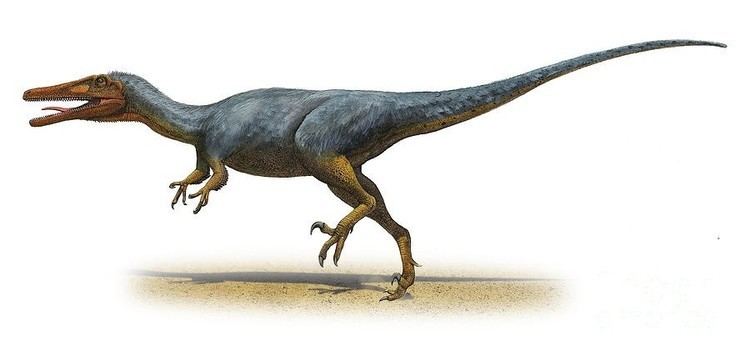
Description
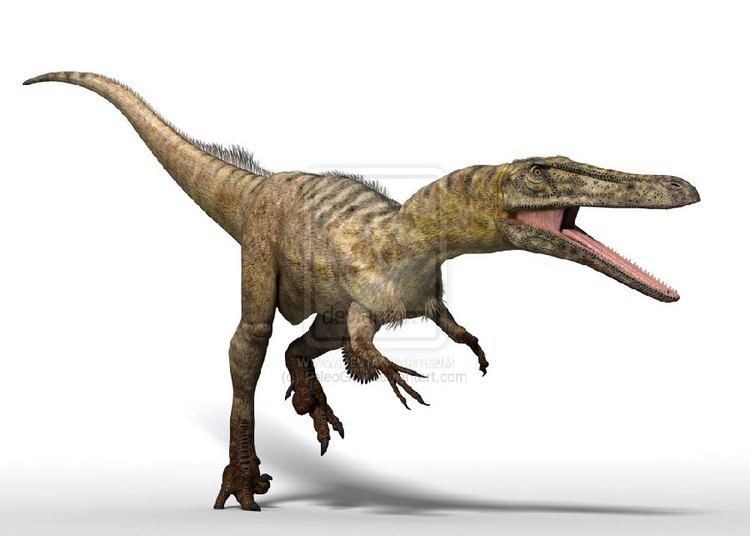
Considered large for a dromaeosaur, Austroraptor cabazai measured around 5 metres (16.4 ft) in length from head to tail. In 2010, Gregory S. Paul estimated its length at at 6 metres, its weight at 300 kilograms. It is the largest dromaeosaur to be discovered in the Southern Hemisphere. The type specimen, labeled MML-195, consisted of a fragmentary skeleton including parts of the dinosaur's skull, the lower jaws, a few neck and torso vertebrae, some ribs, a humerus, and assorted bones from both legs. However little of the entire skeleton was found, what bones were available for analysis expressed some distinct characteristics that differentiate Austroraptor from other dromaeosaurs. A. cabazai's 80 centimeter-long skull was low and elongated, much more so than that of other dromaeosaurs. Several of its skull bones bore some resemblance to that of the smaller troodontid deinonychosaurs. The front limbs of this taxon were short for a dromaeosaur, with its humerus less than half the length of its femur. Among the Dromaeodauridae, only this genus, Tianyuraptor and Mahakala have similarly reduced forelimbs. The relative length of its arms has caused Austroraptor to be compared to another, more famous short-armed dinosaur, Tyrannosaurus.
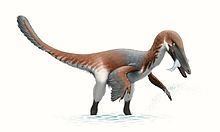
Austroraptor had conical, non-serrated teeth, which Novas et al. compared to those of spinosaurids, based on how the enamel of the surface of its teeth is fluted. Austroraptor shares a trait that is unique to it and to Adasaurus mongoliensis: the descending process of the lacrimal bones curves anteriorly to a large degree. Austroraptor has a bizarre morphology in its pedal phalanges, which are strangely disproportionate. Phalanx IV-2 is over twice the width of phalanx II-2, and nearly three times the expected width based on similarly sized members of its taxonomic family. This has suggested to some researchers that the holotype specimen is a chimera, which means that its bones may be from more than one individual.
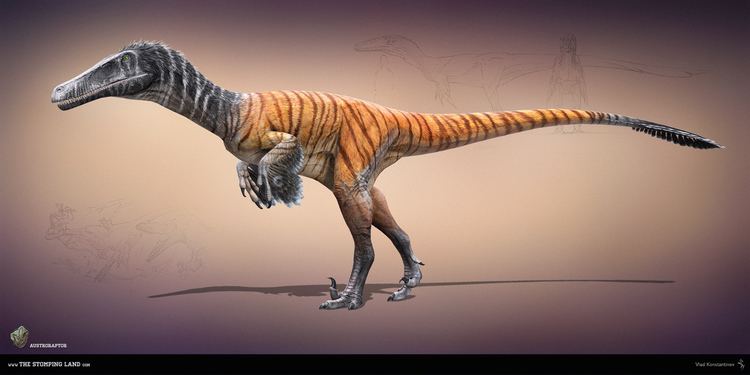
A diagnosis is a statement of the anatomical features of an organism (or group) that collectively distinguish it from all other organisms. Some, but not all, of the features in a diagnosis are also autapomorphies. An autapomorphy is a distinctive anatomical feature that is unique to a given organism or group. According to Novas et al. (2009), Austroraptor can be distinguished based on the following characteristics: a lacrimal that is highly pneumatized, with the descending process strongly curved rostrally*, and with a caudal process flaring out horizontally above the orbit, the postorbital bone is lacking a dorsomedial process for articulation with the frontal bone*, and with the squamosal process extremely reduced, the maxillary and dentary teeth are small, conical, devoid of serrations and fluted, the humerus is short, representing slightly less than fifty percent of length of the femur, the pedal phalanx II-2 is transversely narrow, contrasting with the extremely robust phalanx IV-2.
In 2012, comparison with a second specimen showed that the fourth toe was not especially broad; the purported second phalanx had in fact been a first phalanx.
Discovery
The type specimen of Austroraptor cabazai, holotype MML-195, was recovered in the Bajo de Santa Rosa locality of the Allen Formation, in Río Negro, Argentina. The specimen was collected in 2002 by the team of Fernando Emilio Novas of the Museo Argentino de Ciencias Naturales. It consists of a partial skeleton with skull. The fossil was prepared by Marcelo Pablo Isasi and Santiago Reuil.
In 2008, the type species Austroraptor cabazai was named and described by Fernando Emilio Novas, Diego Pol, Juan Canale, Juan Porfiri and Jorge Calvo. The genus name Austroraptor means "Southern thief", and is derived from the Latin word Auster meaning "the south wind", and the Latin word raptor meaning "thief". The specific name cabazai, was named in honor of Héctor "Tito" Cabaza, who founded the Museo Municipal de Lamarque where the specimen was partially studied.
Phil Currie and Ariana Paulina-Carabajal in 2012 referred a second specimen to Austroraptor cabazai, MML-220, found in 2008. This specimen, a partial skeleton with skull of an adult individual slightly smaller than the holotype, is also housed in the collection of the Museo Municipal de Lamarque in Argentina. It complements the holotype in several elements, mainly the lower arm, hand and foot.
Classification
A cladistic analysis of the specimen's anatomical features by the describers placed Austroraptor within the subfamily Unenlagiinae of the Dromaeosauridae. This assignment was based on characteristics observed in the bones of the skull, the teeth, and the geometry and formation of the specimen's vertebral elements. It was determined that Austroraptor was a close relative of the unenlagiine dromaeosaur Buitreraptor, with which it shares certain derived characteristics of the neck vertebrae.
The following cladogram is based on the phylogenetic analysis conducted by Turner, Makovicky and Norellin 2012, showing the relationships of Austroraptor among the other genera assigned to the taxon Unenlagiinae:
Paleoecology
The specimen was found in terrestrial sediments that were deposited during the Maastrichtian stage of the Cretaceous period, approximately 70 million years ago.
Austroraptor shared its paleoenvironment with early mammals, pterosaurs and the titanosaurids Saltasaurus and Rocasaurus, which may have served as prey for this dromaeosaur.
